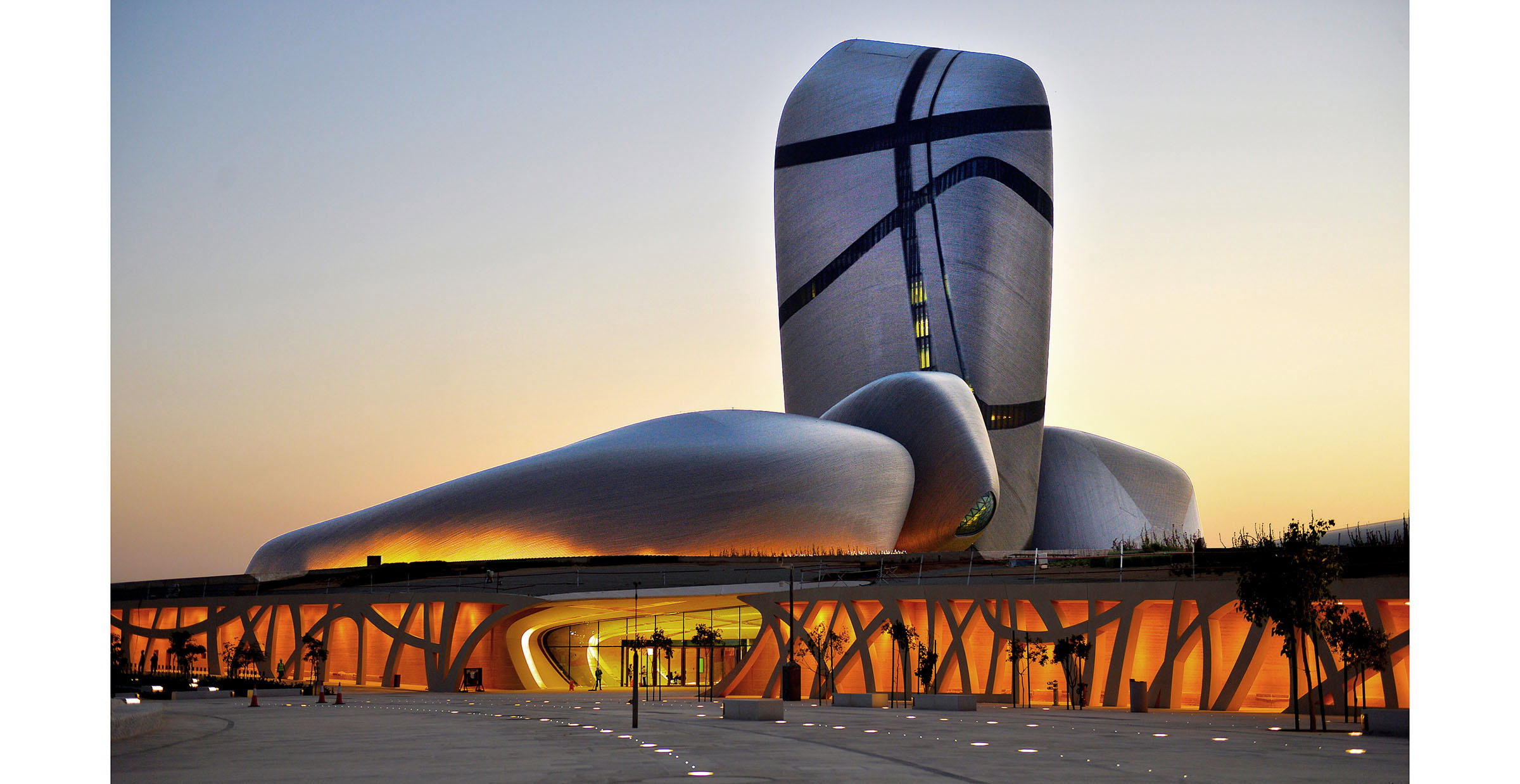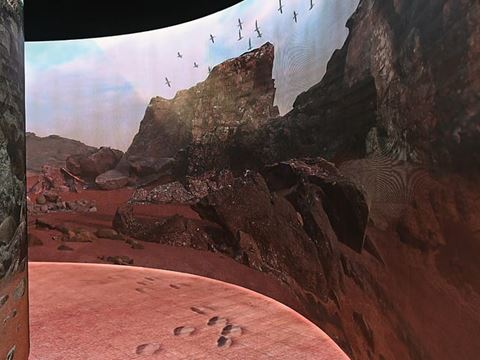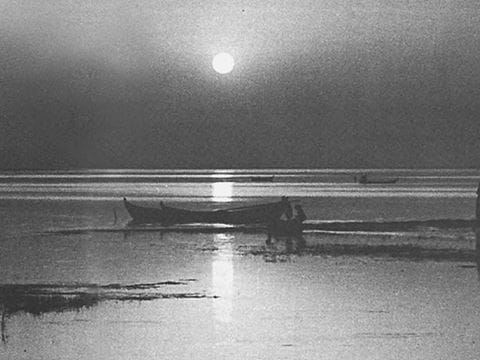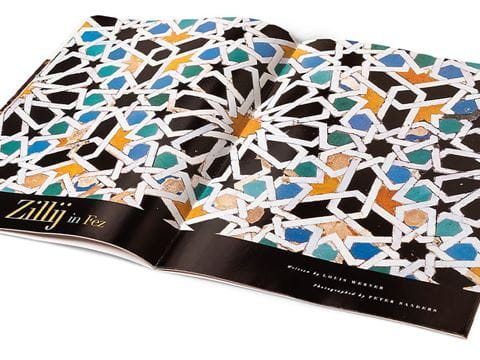
FirstLook: New Energy
Silhouetted from afar, five shapes cluster like wind-worn stones. Closer, they shimmer, suggesting perhaps a squad of recently landed spaceships. The King Abdulaziz Center for World Culture in Dhahran, Saudi Arabia is a new permanent space to local, national and international programs for art, culture, science, education and innovation.
Silhouetted from afar, five shapes cluster like wind-worn stones. Closer, they shimmer, suggesting perhaps a squad of recently landed spaceships. Standing in their shadow, touching one of the thousands of polished steel tubes that wrap the King Abdulaziz Center for World Culture in Dhahran, Saudi Arabia, is to touch a 21st-century mashrabiyyah, the traditional Middle Eastern window screen that both clads and cools. Indoors, a light brown wall of rammed earth, flecked and pitted with desert pebbles, plays off seven tall panels of dark Corten steel inscribed with centuries-old Arabian motifs. In the Great Hall, lighting sparkles across a skysized ceiling like desert stars.








Designed by the Norwegian architectural firm Snøhetta following an international competition in 2007, the Center has been built to Leadership in Energy and Environmental Design (leed) standards by Saudi Aramco. Inaugurated in December by King Salman ibn Abdulaziz Al Sa‘ud, it is scheduled to open to the public this year. When it does, it will give permanent space to local, national and international programs for art, culture, science, education and innovation, a number of which have been under way for several years and have drawn several hundred thousand participants across Saudi Arabia. The new spaces include a creativity incubator called IDEAlab; four natural history and art galleries; two theaters for stage productions and multimedia; and Saudi Arabia’s first children’s museum, a library, a historical archive and the Great Hall for traveling exhibits.
The Center, says Director Tareq Al-Ghamdi, employs “design inspired by the geology that formed the wellspring of the Kingdom’s economy” to raise “a platform for explorers, learners, creators and leaders who believe in the power of people and ideas to unlock new possibilities.”
The Center, says Director Tareq Al-Ghamdi, employs “design inspired by the geology that formed the wellspring of the Kingdom’s economy” to raise “a platform for explorers, learners, creators and leaders who believe in the power of people and ideas to unlock new possibilities.”
You may also be interested in...

Ithra Explores Hijrah in Islam and Prophet Muhammad
History
Arts
Avoiding main roads due to threats to his life, in 622 CE the Prophet Muhammad and his followers escaped north from Makkah to Madinah by riding through the rugged western Arabian Peninsula along path whose precise contours have been traced only recently. Known as the Hijrah, or migration, their eight-day journey became the beginning of the Islamic calendar, and this spring, the exhibition "Hijrah: In the Footsteps of the Prophet," at Ithra in Dhahran, Saudi Arabia, explored the journey itself and its memories-as-story to expand understandings of what the Hijrah has meant both for Muslims and the rest of a the world. "This is a story that addresses universal human themes," says co-curator Idries Trevathan.
Discovering Life and Architecture in Iraqi Marshes
History
Arts
Amidst "the stillness of a world that never knew an engine... he found at last a life he longed to know and share.
Spotlight on Photography: Explore Moroccan Zellige (Zillij) Tilework in Fez With Peter Sanders
Arts
In patterns and refractions, the old city of Fez, Morocco, comes to life through the geometric tile works known as zillij. In 2001, AramcoWorld commissioned photographer Peter Sanders to tell the story of a family who for five generations has added new dimensions to art and architecture.